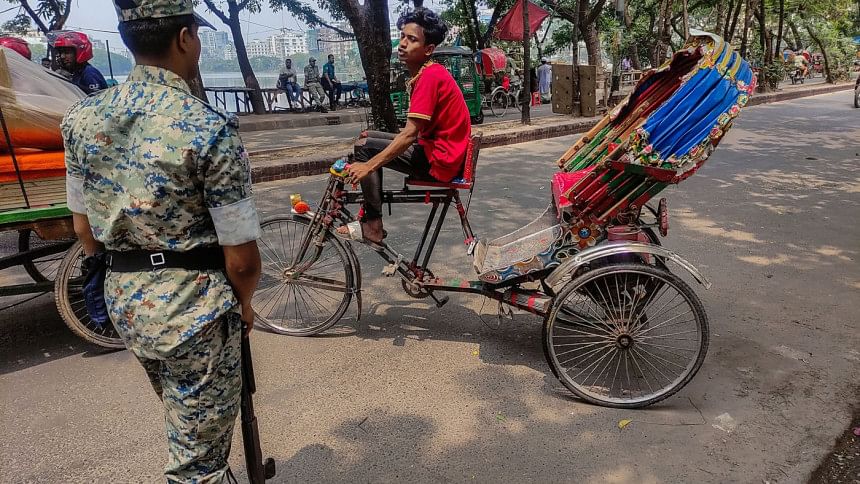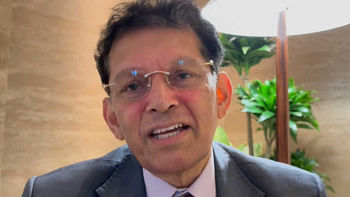Crushing progress: The e-rickshaw dilemma in Dhaka

In the chaos of Dhaka traffic, one vehicle has quietly taken over: the battery-powered three-wheeler, often called the 'Tesla', not the sleek one from Silicon Valley, but the Bangladeshi kind. These electric rickshaws are everywhere. They offer an affordable, eco-friendly alternative to traditional transport, especially in areas where public transit is as elusive as a Dhaka traffic-free day. Cheap to run, fast off the line, and silent killers, literally and figuratively.
However, their rapid proliferation hasn't been without issues. Many are retrofitted without proper safety measures, leading to concerns about their stability and braking capabilities. It's akin to strapping a jet engine onto a bicycle which is thrilling but perilous.
Underneath the elaborate expanded metal shell these things are heavy, fast, unstable, and operated by people who never received any training or license. Every day they cause accidents resulting in bruised pedestrians, broken bumpers, worse. Yesterday an elderly passenger was flung out from the electric rickshaw as it came in too fast across an empty road and smashed into a parked car. The elderly man lay unconscious for minutes as people rushed to help. This is every day, nothing changes.
What the government is doing, or destroying
Now the government has stepped in. Not with regulations. Not with training programs. But with bulldozers.
Over the past few days, city authorities have begun a drive to seize and destroy these vehicles. Bulldozers, with giant claws, smashing the rickshaws like junkyard toys while drivers stand by helpless. These aren't just machines—they're livelihoods.
Yes, these rickshaws are a menace. But is this the way to fix it?
The BUET design that misses the point
To show they're thinking ahead, officials point to a new BUET-designed rickshaw. It has stronger brakes, doors, disc brakes, and bigger tires. Sounds promising but that's the thing. Nobody asked for a redesign. People asked for safety. People asked for rules.
The new rickshaw might stop a little better, sure. But it still doesn't solve the bigger issue: e-rickshaws are fast and reckless because they make driving too easy. You push a throttle, and boom you're in traffic. There's no muscle effort. So drivers take chances. They butt into gaps, cut across roads, ignore signals, because now they can. The redesign is like putting better shoes on someone who keeps tripping, you've fixed the gear, not the behavior.
What we need instead
The problem was never just the machine. It's how we let these machines operate without any kind of structure.
Here's what we should be doing:
- Register every e-rickshaw. Know who owns what.
- Make licenses mandatory. At least test drivers on traffic rules.
- Set speed limits and enforce them with fines.
- Crack down on illegal workshops making unstable, top-heavy versions.
- Train drivers. Just like we do with CNGs and buses.
This isn't radical thinking. This is basic traffic management. If we can have millions of motorcycles on the road with some kind of rules, we can do the same for e-rickshaws.
What went down in Chittagong
In Chittagong, authorities have intensified efforts to address the challenges posed by battery-run rickshaws. Since April 1, the Chattogram Metropolitan Police (CMP) has seized over 3,000 illegal battery-run rickshaws in the city. This crackdown follows a tragic incident on April 18, where a six-month-old infant died when a battery-run auto-rickshaw plunged into a canal in the city's Kapasgola area amid a downpour.
The enforcement actions have led to protests from rickshaw drivers and associated groups. On April 29, three individuals, including leaders of Bangladesh Samajtantrik Dal and Samajtantrik Chhatra Front, were arrested during a rally protesting the ongoing crackdown and alleged police harassment.
While these measures aim to enhance road safety, they have also highlighted the need for comprehensive policies that address both the safety concerns and the livelihoods of those dependent on battery-run rickshaws. The situation underscores the importance of implementing regulations that ensure vehicle safety standards, driver training, and proper registration, rather than solely relying on enforcement actions.
What's in then plans then?
Yes, there have been significant policy developments in Dhaka regarding battery-powered rickshaws (e-rickshaws). The Dhaka North City Corporation (DNCC) has decided to prohibit e-rickshaws from operating on the city's main roads. However, approved standard model e-rickshaws will be allowed to operate in the city's alleys. To facilitate this, a high-level committee is being formed to prepare a standard model and regulatory framework for e-rickshaws. Additionally, BUET's BIPRC e-bike project has proposed a type-approval and registration process for a newly standardized, low-speed three-wheel e-rickshaw model, urging manufacturers to develop prototypes based on this proposal.
Furthermore, the DNCC plans to implement clear regulations, including fixed fare charts, designated parking zones, and mandatory driver training and licensing. There are also plans to phase out existing unsafe rickshaws within a year and provide drivers with access to low-interest loans to upgrade their vehicles. A comprehensive database will be established to register both rickshaws and drivers, ensuring accountability and oversight.
These measures aim to regulate rather than prohibit e-rickshaws, acknowledging their role in providing employment to a significant portion of the population while addressing safety and urban order concerns.
Final thought
What's happening now isn't a solution. It's anger disguised as policy. Yes, these vehicles are dangerous. Yes, we're tired of accidents. But destroying them wholesale without offering alternatives or regulation? That's not fixing a problem, that's avoiding it with brute force.
We need rules, enforcement and planning. Bulldozers won't solve what bad policy created.

 For all latest news, follow The Daily Star's Google News channel.
For all latest news, follow The Daily Star's Google News channel. 



Comments